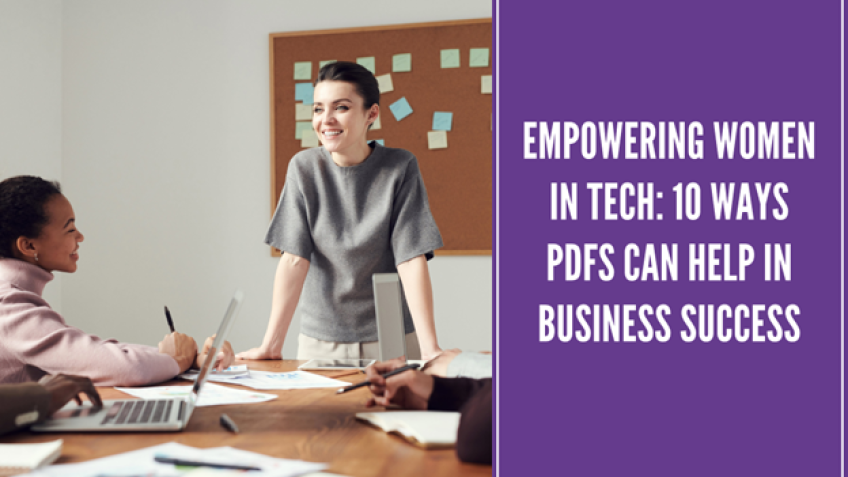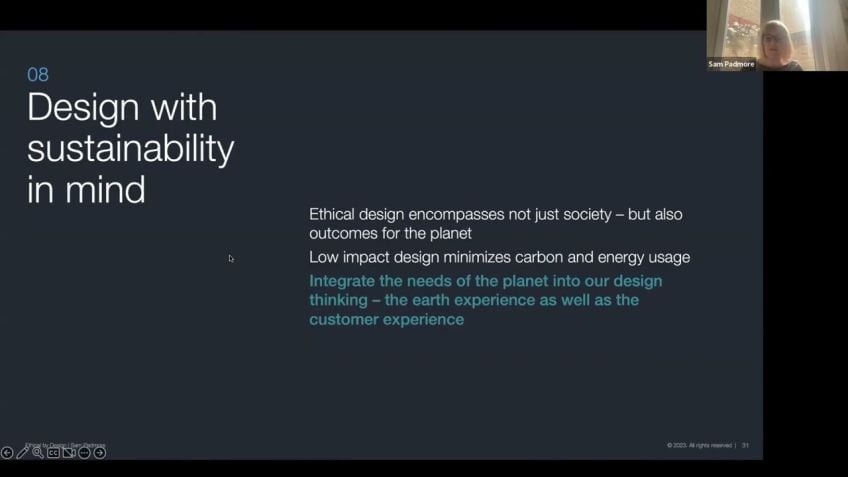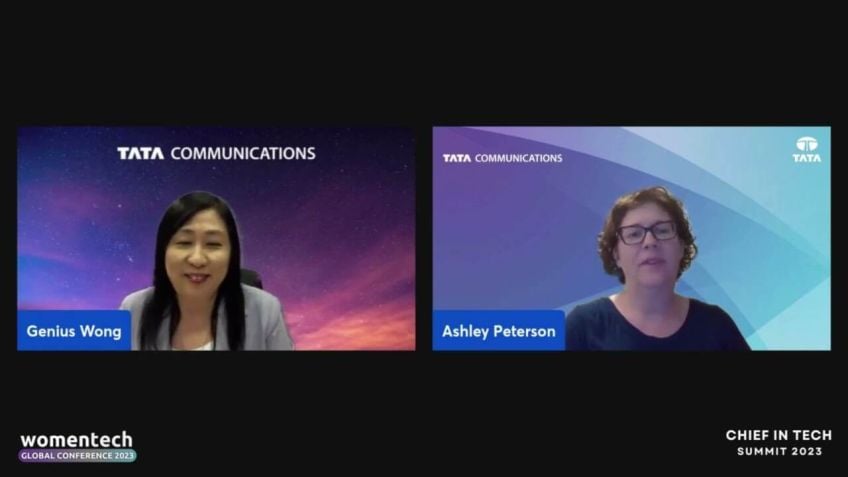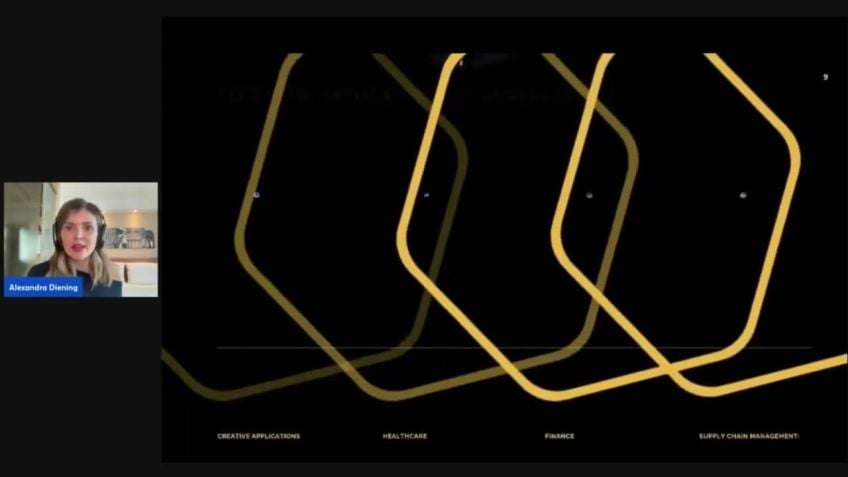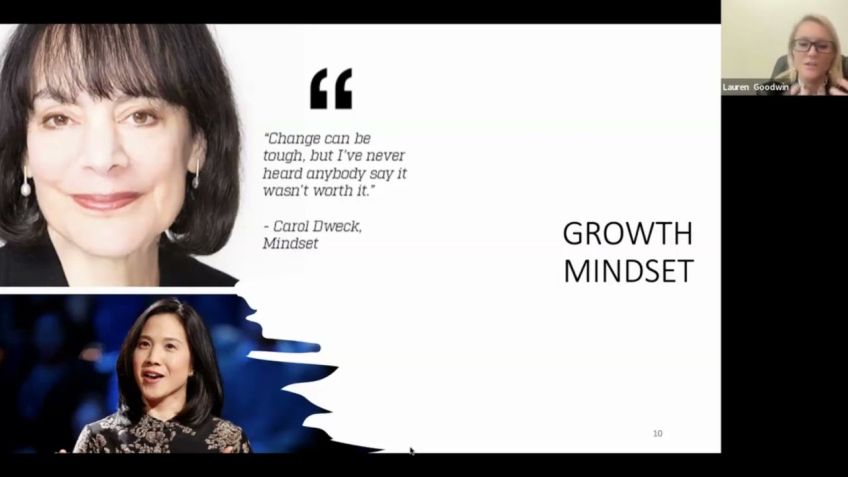Sara Luchian - Designing the Future of Transportation at the Intersection of Innovation and Inclusion
Designing the Virgin Hyperloop: A Greater Commute Experience for Everybody
Welcome to this thrilling exploration into the Virgin Hyperloop: a game-changing mode of mass transit currently making waves. I'm Sarah Luian, the passenger experience director at Virgin Hyperloop, and today I take you through the incredible journey and the fascinating design aspects behind creating an inclusive and intuitive travelling experience for future passengers.
Developing The Virgin Hyperloop: A Start-Up Adventure
As a start-up based in Los Angeles, the Virgin Hyperloop project aims to revolutionize public transport through the development of a superfast mass transit system. My role primarily involves driving research and design decisions to enhance the passenger’s interaction with the Hyperloop. In short, making their travel experience more comfortable, user-friendly, and inclusive.
The Virgin Hyperloop: A New Form of Mass Transit
For those who might not know what a Hyperloop is, it is a new form of mass transit system that involves propelling magnetically levitated vehicles or pods through a vacuum tube at high speeds. Elimination of aerodynamic drag and lack of friction of wheels on the track enables the system to reach mesmerizing speeds of over 600 MPH or 1000 km/hour – on par with an airplane and absolutely electric!
The Impact Of Hyperloop On Urban Life
Imagine the ramifications of such high-speed terrestrial travel. With more than half the world's population residing in cities, housing affordability can be quite challenging. Typically, living on the outskirts provides a solution, but at the cost of longer commutes and increased pollution. However, the Hyperloop presents an exciting alternative: what if cities could be interlinked as subway stations? This could potentially revolutionize urban living, allowing people to live in affordable regions while accessing prime city-centre opportunities.
The Journey Of Designing the Virgin Hyperloop
Our task was to craft a new mode of travel from scratch - a challenge and an opportunity. We started with a vision: transforming mass transit to be more human-centric and welcoming, moving away from an overtly techie vision to focusing on the benefits that the technology enables.
- Accommodating Differing Needs: We designed the pod to cater to multiple use cases. There is individual seating for introverted or business travelers, while groups of friends or family can sit together.
- Connecting With The Journey: We learned that passengers wanted to feel involved in their journey. Though window views would be impossible in vacuum tubes, we worked on ensuring passengers felt a sense of their progress and remained connected to the world outside.
- Inclusive Design: Our ambition for the Hyperloop is to be an inclusive mode of mass transport for everyone. Creating an entirely wheelchair-accessible space is one of our commitments, and we are continuously working to improve accessibility for people with visual, hearing impairments, or who are neurodivergent.
Reflection and The Future of Hyperloop
Designing the future of public transit is no small task, especially when aiming to create an inclusive, efficient, and comfortable passenger experience. Our journey into tomorrow is still ongoing. It is our collective responsibility to envision, support, and build increasingly innovative solutions that shape a better world.
The moment we first rode in the Hyperloop was truly breathtaking. It served as a stark reminder that we were literally moving into the future and that every step taken, every idea materialized, is collectively shaping the world we and future generations will inhabit. The path ahead may not be straight, but I am confident that together, we can create not just a new mode of transportation, but a brighter future for all.
Thank you for joining me on this exciting journey into the future of mass transit.
Video Transcription
It is such a pleasure to be here with all of you. My name is Sarah Luian and I am the director of passenger experience at Virgin Hyperloop.That is a start up based in Los Angeles that is working on developing and deploying a new superfast form of mass transit. So in my role, I focus on driving the research and design decisions that make the Hyperloop more comfortable, convenient, intuitive and inclusive for our future passengers.
Now more tactically what this means is that I spend perhaps an inordinate amount of time asking colleagues and strangers slightly intrusive questions. Like, what do you hate about your commute? Are you an introvert or an extrovert? And even how often would you say that you have to use the bathroom? Now, hang on to that last one because for better or for worse, it'll probably come up again later. But first, if you'll permit me, I'd like to take you on a brief but exciting trip down memory lane. Imagine that you are with me in November of 2020 at the Virgin Hyperloop test site in the middle of the Nevada desert. It was there on a chilly Sunday morning. Not that long after sunrise that I found myself stepping into a small vehicle that we call a pod side by side with the co-founder of our company just waiting for this momentous occasion. Our shot to be the very first people to ride on this new mode of transportation. The Hyperloop and there are hundreds of people watching online. There are dozens more watching from the control room and the test site. There's the New York Times, all sorts of news outlets are there on site. And it's this huge moment for our company because it's the first time that people will ever go in a Hyperloop.
Now I'll pause for a moment as some of you may be wondering what the Hyperloop is. And for those who don't know, it's basically a new form of mass transit that propels magnetically levitated vehicles, which we call pods through a vacuum tube at high speeds. And because there's no friction of wheels on track and because there's this low-pressure environment which practically eliminates all of the aerodynamic drag. These vehicles are able to reach speeds of over 600 MPH or 1000 kilometers an hour, which is as fast as a plane but fully electric.
So there are no direct emissions. Now, imagine how terrestrial travel at these speeds could change your life. I know that I have, I, I know it's part of what's ignited the public mag nation. It's more than half of the world's population myself included lives in cities today and it can be really hard to own or even rent a home inside of the city. But living on the periphery where it's more affordable, means longer commutes, increased pollution, uh infuriating congestion on the highways and frankly greater inequities between people at different income levels. So with Hyperloop in theory, cities could be connected as if they were metro stops, which would allow us to live in the places that we want, the places we can afford while working where the best opportunities are. So that's the vision. That's, that's what inspired me. But you know, that's some years away. Where are we today today? We are still imagining ourselves in that test vehicle at the Hyperloop track in Nevada. Let's say you're sitting next to me walking alongside me as my colleague is here. Why are you here? What do you hope to learn? What are you feeling now? You can probably see in this image that I'm feeling excitement, right?
Pride too because I had applied for this opportunity and I was trying to extract the learnings to help make the experience better for everyone, the millions of passengers that I hope will follow me. But the truth is I also felt some incredulity. I felt a kind of disbelief that I was even there because the truth is before I started working at Virgin Hyperloop, I had no experience in design, had virtually no experience in technology or transportation. And in my entire life, even though I live in Los Angeles today in my entire life, I have never even owned a car. Now, there's a great Steve Jobs quote about how you can never really connect the dots in your career until you look back at it. That it only makes sense in retrospect. But you know that quote, this kind of overdone, we've all heard about Steve Jobs. I'm going to quote someone who's even more formidable than him. And that is my mom. She would always tell me, Sara, nothing you learn is ever wasted. Nothing you learn is ever wasted. And that's something that I had to repeat back uh to myself and to my, my friends and my parents as I tended to pursue things that didn't always make sense to them and frankly didn't always even make sense to me. The truth is I was born to two Eastern European engineers. You may know the kind you, you may be one yourself. They're the kinds of people who say things like be whatever you want to be.
As long as you are the very best in the whole world, there's no pressure, right? So they thought that I should be a doctor, a lawyer, an engineer, maybe an astronaut. My mom dreamed of being one when she was young growing up in communist Romania. And I think that's why she became an engineer. But me, I liked STEM but I was more interested in people, what moves and motivates us how to influence and inspire the strength and fragility of our connections with one another. So as early as my teens, I joined a crisis hotline and I mention it because uh I think it taught me one of the key skills that I still use to this day. One of the skills that actually got me into tech, which is how to validate people's feelings, how to sympathize with them even when perhaps, especially when I don't share those feelings or those experiences was a psychology major in college. So kind of more of the same. And then I went into nonprofit work after I graduated, trying to make a positive impact in the world. But ultimately, I decided that nonprofits weren't really the right avenue for me and that I'd be better served, learning to speak the language of business. So I went and I got my MB A and I spent a few years consulting before being swept up by the promise of Hyperloop. Now, why do I mention all of this again?
It's because I firmly believe that these previous experiences set me up to do a better job in my current role. And I started working at Hyperloop in the Business Strategy Group. So I was doing kind of standard stuff like business model definition, market research, uh product development, planning, investor engagement. And I started to identify some of the strengths and shortcomings of our approach up to that point. The thing is that for years since the company's inception, our engineers had understandably been laser focused on developing and refining the technology itself. But there had been almost no focus on the experience that that technology would enable. I I honestly believe that you can design the most elegant mechanical solution, display sophisticated diagrams or calculate a super impressive return on investment. But at the end of the day, we are talking to and moving human beings. So this is where my background in psychology came in handy because people want to know what does it feel like? How does it make my life better? Are there bathrooms, are there windows? And so those are some of the questions that I started asking in in 2019, I was able to establish the passenger experience function to start probing some of these questions and issues. And so let me pause here for a moment and pose the question to you.
Let's say that you have the opportunity to design a new way of traveling entirely from scratch. How would you imagine it? What functions and features would you prioritize? Where would you even begin? Now? I think one of the greatest advantages we have in innovative industries such as Hyperloop is is that we're not hamstrung by legacy processes or technology. We can look at the experience of travel with fresh eyes and ask, what do I love? What do I hate? Is this still necessary and then start from the ground up. Now, some of my colleagues had started that process and so now I'm going to show you the pod uh that we had been working with. We actually designed and fabricated this vehicle in 2017 around the same time that I joined the company. Uh And I, I want you to look at it and ask yourself, what do I like? Um What don't I like? What's missing? Who does this accommodate? How does this make me feel? Would I write it? But I write it every day. Would my grandmother ride it? Right. And so I looked at this and I thought, wow, this is really cool. But then I started to notice some things that were missing like bathrooms or windows. And I started asking, hey, um, are there any bathrooms and my colleagues time after time would say no, obviously not. And I was like, why is that obvious?
They're like, well, it's gonna be a short trip. You know, we're going super fast. The first few routes probably only half an hour I thought, hm. Yeah, half an hour. That's reasonable. But then I thought, well, what's the limit? Is it an hour? Is it two hours? Maybe there are people for whom 15 minutes is the limit. So fortunately, I was able to commission some focus groups and I had people view the same image among others. Um And I, I source them from all over the world, right from the US, India, Middle East, some of our key markets at the time and I asked their opinions. Right. And, and you've got to ask what they think, but also why? So here are some of the comments that we got cool, futuristic, great, but also cold off-putting. Someone said it looks like an apocalyptic dentist's office and some of them were even more interesting than that. Right. So here I am getting all of this feedback and I'm thinking all right, so vindicated on the bathrooms, but uh what else have we assumed was obvious, who else are we not thinking about? Some people were adamant that they wanted windows, right? And in probing deeper, we discovered that the reason was not necessarily what you might expect.
Many of us spend time in windowless rooms or ride in elevators or flying planes where the shades are drawn and you can't really see anything because the sky is dark, but rather than needing to see a view which would be impossible inside of a vacuum tube. Um People wanted to have a sense of where they were in their journey, they wanted to feel connected to the outside world. So we started integrating some of these ideas and um you know, we were thinking we're gonna move away from this dark dystopian vision of the future into something that is more human centric, that's more welcoming, approachable, open, clean, optimistic. We're not gonna put tech forward because at the end of the day, that's not what people said that they wanted. It's not about the tech per se, it's about what the tech enables, right? So here's an image of our overall uh station design. Um elements of biophilia, clear way finding that enables people who are maybe not so technologically literate or who are not literate at all to help find their way. We designed a pod that accommodates a bunch of different needs and use cases like individual seating along the side for people like me who are business, travelers, introverted neurodivergent have the need to be a little separate to focus but also accommodating for friends, families, extroverts uh who want to sit together, who are traveling together.
And fundamentally, I believe that we need to be designing for all of these use cases. Um because mass transit truly should be for everybody that innovation should serve the greater good, right? And contrary to popular belief, innovation itself is not good per se. It's neutral, tech is neutral, it can be used for good or for bad. And few of us are likely to go into fields where an objective is explicitly evil, of course, but carelessness can yield unfortunate outcomes especially in industries that are on the cutting edge. So we have to include a diverse array of people in the conversation. Too often. Our workplaces are kind of homogeneous, you know, whether superficially like based on age, gender or race um or more subtly like education and income and culture. And when we consult with people only who are like us, blind spots emerge and are amplified over time. And that's how we end up with medicines that have only been tested on men or submissive personal robots that have feminine names and voices, facial recognition software A I that fails to distinguish between darker colored skin tones, right? I don't believe that's malicious intent. That's carelessness.
This failure to think ahead to imagine the experiences of people other than ourselves to exercise, empathy can perpetuate injustice and disadvantage. So maybe you faced this challenge, this ongoing campaign of trying to introduce ethical or emotional dimensions to an industry, whatever that industry might be that sees itself as neutral, agnostic, logical, untouched by the messiness of human factors. I encourage you to keep working at it to imagine a world where every one of us speaks up not only for the people who are like us, but for those who don't have as powerful a voice innovation offers us that opportunity. It insists on that responsibility. So that's a critical aspect of my work at Virgin Hyperloop, considering the impact of our technology on as broad an array of people as possible. If it's truly to be a mass transit solution, it must serve and welcome everybody. So we're still working on it. Our creative ideation is still ongoing. The entire journey will be wheelchair accessible and I'm I'm working to expand our definition of access to those who might have visual or hearing impairment or who may be neurodivergent. Um My focus going forward is is to, to focus on inclusive design.
The approach that there is no normal passenger or standard use case that we are all unique and that we can build a better future and indeed a better business by acknowledging those differences. Of course, if those goals were easily attained, they'd already be widespread, right?
And I realized that not every aspiration we have is going to be realized, but humanity has always striven for goals, just seemingly just out of reach. And that I think is how we make progress. It's our job to dream that big dream to translate it into actionable requirements and to support each other in building the things that will hopefully transport us all into a brighter better future. Which of course brings me finally back to that chilly morning in the small test vehicle in Nevada moments before launch, my colleague turned to me and said, can you believe that we're about to ride in something that was just an idea a few years ago and seconds later, that's exactly what we did.
And as the vehicle accelerated to nearly 100 and 10 MPH, uh that thought just took my breath away. We were cruising through the tunnel with these purple ring lights flashing by and suffusing the cabin with a lavender glow. And I felt, I felt distinctly like I was traveling into the future and in a sense I was. And so are you? And every day that we work, every idea that we pursue, every person that we empower is moving us forward into the future that we and our Children will inherit. There's so much yet to be done. And unlike the Hyperloop, the way is not always straight, but I'm confident that together we can shape a better world. And I'm grateful to be on this journey with you. I hope that you find it as exciting as I do. Thank you.

